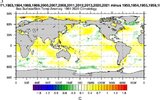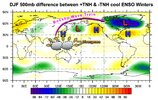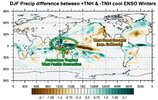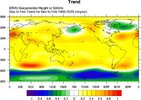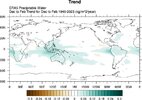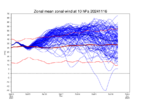LukeBarrette
im north of 90% of people on here so yeah
Meteorology Student
Member
2024 Supporter
2017-2023 Supporter
Maybe that will get stuck till MarchView attachment 154034
Yeah ight
Oh yeah the fantasy storms begin. Let’s start it up boys.
Lol I really hope we don't have to look at 600 hr maps all winter in the main threads. 384 hr maps are bad enoughOh yeah the fantasy storms begin. Let’s start it up boys.
That’s called , kicking the ole can down the road game … lol get ready for itLol I really hope we don't have to look at 600 hr maps all winter in the main threads. 384 hr maps are bad enough
It’s fine we are all used to it by now. It’s fun to dream.That’s called , kicking the ole can down the road game … lol get ready for it
This doesn’t look like 18 inches to me.View attachment 154053
That would be great. You can see a little CAD signature as well. And if we can get more miller B type setups this winter we could tap into the la nina enhanced cold to our north. The miller B storms would get forced to redevelop off our coast and not run up the apps. At least that's what I'm hoping for..
Get a ssw event or even a stretching of pv would probably keep the pv from being strong or wrapped up, which is what we want imoHubba hubba
Does that mean we go negative this year?
Not promising for winter weather for this board.
If this goes like I am thinking we probably will not get snow but could have some ice this winter. I'm thinking this winter will be roughly like 1998-99 IF LaNina arrives in time.Does that mean we go negative this year?
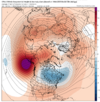
I personally feel like with a +qbo with higher solar, it usually supports a better chance at colder weather. People usually discount it. A pole ward aleutian ridge will promote the opportunity at a better delivery mechanism to bring cold south imoThe cadence of the MJO in autumn tends to carry thru the first half of winter. This autumn, the MJO has been running on a regular, predictable cycle. With that in mind, we should see the MJO on the left side of the diagram (7-8-1-2 in W Hemisphere) sometime within the late Dec to late Jan timeframe. Coupling that with a weaker Nina background (w/ -PDO) and a +QBO, which favors poleward N Pac ridging, should give us a thing or 2 to look at in that prime climo timeframe.
CFS for January has a reasonable look to it here
View attachment 154227
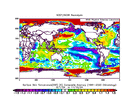
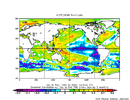
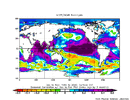
All I need to know is if this means we will have our chances.A lot of times, the kind of cool ENSO winters that are warm in December and cooler in Jan-Feb in the conus, breaking the La Niña evolution mold, are predominantly +TNH/-EPO winters (Hudson Bay Vortex & Alaskan ridge).
A big reason why +TNH/-EPO winters this is that these types of winters with a big Hudson Bay Vortex in the troposphere tend to couple with the a cooler, stronger stratospheric polar vortex, which helps to reinforce & anchor the Hudson Bay vortex in place (via for ex, barotropic coupling processes and wave reflection). It certainly feels like this winter is headed in that general direction.
While we will certainly get our fair share of SE US ridging and -PNA, I think this winter leans more towards the +TNH/-EPO pattern overall, especially mid to late winter (tho even then we will still have a SE ridge overall).
For example compare Global SSTa since September 1st to the Sep-Oct-Nov correlation patterns.
SSTa this year
View attachment 154237
SON SSTa correlation pattern for +TNH
View attachment 154236
SON pattern for -PNA
View attachment 154238
Key takeaways here:
- Current SSTa pattern is closer to the +TNH than the -PNA. The anomalous tropical West Pac and Indian Ocean warmth + weak, East-based La Niña stands out
-PNA is more closely linked to ENSO intensity (-PNA favored in stronger La Ninas), with no real signal in the West Pacific. -PNA is also more favored with a cooler Indian Ocean. The cooler Indian Ocean quells convection there, which takes westerly momentum out of the Pacific Jet downstream, shifting the centers of action to the west, favoring western troughing more. There’s also an inverted relationship here that’s tied to increased solar radiation during El Niño preferentially warming the water more.
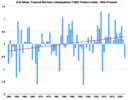
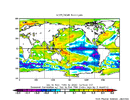
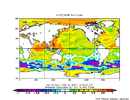
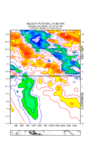
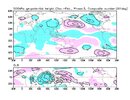
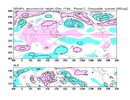
All I need to know is if this means we will have our chances.
Hopefully the mjo don't stall in the warmer phases and keep propagating and if it stalled, it would be in colder phases. I talked to Dr. Roundy and he believes mid end December should see more west Canada ridging and Alaska based on his regression model fwiwAs griteater mentioned on Bluesky, I agree that this winter will probably flip flop between -PNA & +TNH type Nina pattern flavors as subseasonal/MJO forcing orbits across the Indo-Pacific.
Indian Ocean MJO favors jet retraction & a western trough, while west pacific mjo activity adding some westerly momentum into the jet may dislodge the Aleutian ridge into Alaska, resulting in a -EPO/+TNH.
As we see the MJO enter the Indian Ocean into early to mid December, we probably will see the classic -PNA type pattern try to take hold & favor milder conditions for a majority of the month.
Late in the month into early January, that’s when things could get interesting as the MJO starts to enter the West Pacific yet again.
View attachment 154275
Phase 3 MJO DJF
View attachment 154273
Phase 7 MJO DJF
View attachment 154274
